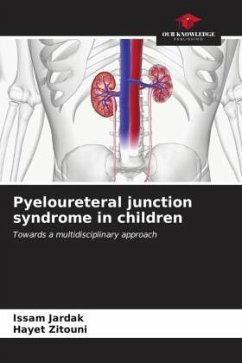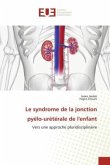Pyeloureteral junction syndrome is the most common obstructive uropathy in children, accounting for 40% of malformative uropathies. It is a urodynamic disorder of evacuation of the upper excretory tract upstream of a functional or organic obstacle at the pyeloureteral junction. Clarifying the dynamics of renal functional change following ureteral obstruction as a result of this syndrome is paramount to correctly understanding renal function outcomes, accurately assessing renal function during obstruction and its recoverability, The diagnosis of pyeloureteral junction syndrome has been profoundly modified by the development of antenatal ultrasound and dynamic scintigraphy, enabling early diagnosis and subsequent management before the onset of clinical symptoms. This multidisciplinary approach will therefore influence the clinician's therapeutic decisions.
Bitte wählen Sie Ihr Anliegen aus.
Rechnungen
Retourenschein anfordern
Bestellstatus
Storno








